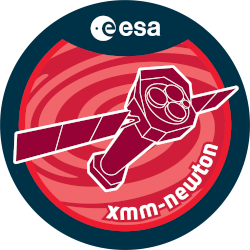

| Proposal ID | 072817 |
| Title | Warm And Hot Gases In And Around Cluster Galaxies At Z=0.1-0.2 |
| Download Data Associated to the proposal | https://nxsa.esac.esa.int/nxsa-sl/servlet/data-action-aio?obsno=0728170101 |
| DOI | https://doi.org/10.5270/esa-m6uw63l |
| Principal Investigator, PI | Prof Q. Daniel Wang |
| Abstract | We propose a joint HST/XMM-Newton observing program to study both warm and hotgases in three optically-selected galaxy clusters at z=0.117-0.2108. Eachcluster has a UV-bright background QSO projected within the expected strongaccretion shock (< 2r_200). We will observe UV absorption lines of the O VIdoublet, HI Ly-alpha and Ly-beta, and other ion transitions in the rest frame ofthe clusters, using the HST/COS G130M grating. These absorption lines aresensitive to the thermal, kinetic, and chemical properties of warm (T < 10^6K) gas, associated with the halos of individual galaxies and the intraclustermedium. Chandra/ACIS observations will be used to measure the luminosity,temperature, and morphology of the hot gas component of the clusters. |
| Publications |
|
| Instrument | EMOS1, EMOS2, EPN, OM, RGS1, RGS2 |
| Temporal Coverage | 2014-01-05T21:45:41Z/2014-01-06T10:57:21Z |
| Version | 17.56_20190403_1200 |
| Mission Description | The European Space Agencys (ESA) X-ray Multi-Mirror Mission (XMM-Newton) was launched by an Ariane 504 on December 10th 1999. XMM-Newton is ESAs second cornerstone of the Horizon 2000 Science Programme. It carries 3 high throughput X-ray telescopes with an unprecedented effective area, and an optical monitor, the first flown on a X-ray observatory. The large collecting area and ability to make long uninterrupted exposures provide highly sensitive observations. Since Earths atmosphere blocks out all X-rays, only a telescope in space can detect and study celestial X-ray sources. The XMM-Newton mission is helping scientists to solve a number of cosmic mysteries, ranging from the enigmatic black holes to the origins of the Universe itself. Observing time on XMM-Newton is being made available to the scientific community, applying for observational periods on a competitive basis. |
| Creator Contact | https://www.cosmos.esa.int/web/xmm-newton/xmm-newton-helpdesk |
| Date Published | 2015-01-24T23:00:00Z |
| Last Update | 2025-08-04 |
| Keywords | "hi ly alpha", "uv absorption lines", "absorption lines", "ion transitions", "ly beta", "XMM", "chemical properties", "accretion shock", "hot gas component", "cos g130m grating", "galaxy cluster", "xmm newton", "hot gases", "rest frame", "individual galaxy", "HST", "XMM-Newton", "vi doublet", "intracluster medium", "cluster galaxy" |
| Publisher And Registrant | European Space Agency |
| Credit Guidelines | European Space Agency, Prof Q. Daniel Wang, 2015, 'Warm And Hot Gases In And Around Cluster Galaxies At Z=0.1-0.2', 17.56_20190403_1200, European Space Agency, https://doi.org/10.5270/esa-m6uw63l |